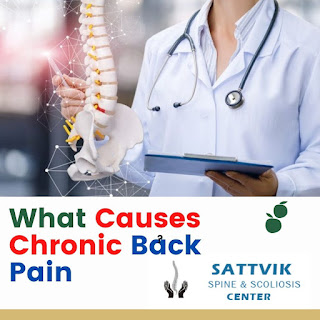How Do Idiopathic And Congenital Scoliosis Differ? - Top Scoliosis Surgeon In india
Top Scoliosis Surgeon In india
While there are many similarities between the two types of scoliosis, there are also differences. To understand how the two differ, it helps to know the age at which they usually develop and what treatments are available. Read on to learn more about this condition. You can even get treatment if you have a family history of the condition. Read on to learn more about the age at which your condition starts.
Diagnosis
There are several diagnostic tests used to determine the cause of idiopathic and congenitally inherited scoliosis. X-rays are one way doctors determine whether the spine curve is congenital or idiopathic, as well as a CT scan. MRIs are more sensitive and allow doctors to evaluate soft tissues and spinal cord abnormalities. The severity of the curve and any other health problems will be considered in a child's diagnosis.
In both idiopathic and congenital forms, a physician can rule out a comorbid disorder. Infantile scoliosis is less common and has a higher risk for comorbidity than adolescent scoliosis. Infantile scoliosis requires a spinal survey and an MRI scan to rule out an intrinsic neurologic abnormality. However, an MRI is not necessary to diagnose idiopathic scoliosis.
Know more about the Neuromuscular Scoliosis
Treatment
Both idiopathic and congenital sclerotherapy involve spinal curvature management. In the case of congenital scoliosis, a comprehensive examination is performed at birth. X-rays may reveal abnormal vertebrae and the severity of the curve. In addition to X-rays, doctors may perform a CT scan or MRI to evaluate soft tissues and spinal cord abnormalities.
For idiopathic scoliosis, the spine curvature is not caused by a known cause, but symptoms can be visible. Children are often examined during screenings at school, where the spine is assessed by x-ray. X-rays, especially dynamic x-rays, provide detailed images of the spine. A dynamic x-ray shows the spine in motion, and is the most accurate way to evaluate spinal alignment and stability. Magnetic resonance imaging, on the other hand, uses large magnets and radiofrequencies to produce detailed images of organs.
Age of onset
The onset of scoliosis depends on the age of the patient. There are many types of idiopathic scoliosis. Infancy and childhood are the most common times for curves to begin, and most resolve spontaneously. While some cases progress to a more severe form, the majority resolve on their own. However, juvenile idiopathic scoliosis can become more severe as a child ages.
A few studies have explored the age of onset of idiopathic scoliosis. The Cilli study looked at adolescent girls and found a lower prevalence than that of the males in the same age group. The Daruwalla study, however, only studied girls from ages 16-17. And, a recent study by Kamtsiuris found a high prevalence in children aged between eleven and fourteen years, although that number is still small compared to the Cilli study.
Symptoms
A thorough examination will identify scoliosis symptoms and may help the physician determine whether a child is suffering from either idiopathic or congenital scoliosis. The doctor will evaluate the child's X-rays to see the vertebrae's position and the severity of the curve. Children with idiopathic scoliosis may need to undergo imaging studies, such as a CT scan or MRI of the spine. Additionally, a scoliometer may be used to measure the vertebrae's curvature.
In children with idiopathic scoliosis, the curves may not be noticeable at birth but will continue to worsen over time. While congenital scoliosis may not require treatment at the onset, early detection is important. It is more common to find this type of scoliosis during a physical exam, when curves are first noticeable.Dr. Yogesh Pithwa - best spine surgeon in india to spine surgery for back-pain treatment

Comments
Post a Comment